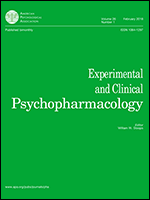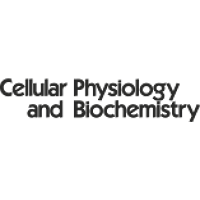 “The neurodegeneration, neuro-inflammation and mitochondrial dysfunction which occur by methamphetamine (METH) abuse or administration are serious and motivation therapeutic approaches for inhibition of these types of neurodegeneration. As we know, METH through Toll-like receptors (TLRs), specially type 4, and NF-κB signaling pathway causes neuro-inflammation and mitochondrial dysfunction.
“The neurodegeneration, neuro-inflammation and mitochondrial dysfunction which occur by methamphetamine (METH) abuse or administration are serious and motivation therapeutic approaches for inhibition of these types of neurodegeneration. As we know, METH through Toll-like receptors (TLRs), specially type 4, and NF-κB signaling pathway causes neuro-inflammation and mitochondrial dysfunction.
Neuroprotective approach for management of METH-induced neurodegeneration, inflammation and mitochondrial dysfunction, through a novel neuroprotective agent is continuously being superior to any kind of other therapeutic strategy. Therefore, the clarification, introduction and development of efficacious novel neuroprotective agent are demanded. During recent years, using new neuroprotective agent with therapeutic probability for treatment of METH-induced neuro-inflammation and mitochondrial dysfunction has been astoundingly increased.
Previous studies have stated the neuroprotective and anti-inflammatory roles of cannabinoid derivate such as cannabidiol (CBD) and delta-9-tetrahydrocannabinol (Δ9-THC) in multiple neurodegenerative events and diseases.
According to literature cannabinoid derivate, by inhibition of TLR4 and activation of NF-κB signaling pathway, exerts their anti-inflammatory and neuroprotective effects and cause mitochondrial biogenesis. Thus we hypothesized that by using cannabinoids in METH dependent subject it would provide neuroprotection against METH-induced neurodegeneration, neuro-inflammation and mitochondrial dysfunction and probably can manage sequels of METH-induced neurochemical abuses via modulation of TLR4/NF-κB signaling pathway.
In this article, we tried to discuss our hypothesis regarding the possible role of CBD and Δ9-THC, as a potent neuroprotective and anti-inflammatory agents, in inhibition or treatment of METH-induced neurodegeneration, neuro-inflammation and mitochondrial dysfunction through its effects on TLR4/NF-κB signaling pathway.”
https://www.ncbi.nlm.nih.gov/pubmed/31465975
https://www.sciencedirect.com/science/article/abs/pii/S030698771930739X?via%3Dihub


 “Medical and recreational cannabis use is increasing significantly, but its impacts on oral health remains unclear.
“Medical and recreational cannabis use is increasing significantly, but its impacts on oral health remains unclear. “Cannabidiol (CBD) oils are low tetrahydrocannabinol products derived from
“Cannabidiol (CBD) oils are low tetrahydrocannabinol products derived from  “Phytocannabinoids are unique terpenophenolic compounds predominantly produced in the glandular trichomes of the cannabis plant (Cannabis sativa L.). The delta-9- tetrahydrocannabinol (THC) is the main active constituent responsible for the plant’s psychoactive effect and, together with the non- psychoactive cannabidiol (CBD), the most investigated naturally occurring cannabinoid.
“Phytocannabinoids are unique terpenophenolic compounds predominantly produced in the glandular trichomes of the cannabis plant (Cannabis sativa L.). The delta-9- tetrahydrocannabinol (THC) is the main active constituent responsible for the plant’s psychoactive effect and, together with the non- psychoactive cannabidiol (CBD), the most investigated naturally occurring cannabinoid. “Among the assisted reproductive techniques, the in vitro maturation of oocytes (IVM) is less developed than other techniques, but its implementation would entail a qualitative advance.
“Among the assisted reproductive techniques, the in vitro maturation of oocytes (IVM) is less developed than other techniques, but its implementation would entail a qualitative advance. “The prior medical literature offers little guidance as to how pain relief and side effect manifestation may vary across commonly used and commercially available cannabis product types. We used the largest dataset in the United States of real-time responses to and side effect reporting from patient-directed cannabis consumption sessions for the treatment of pain under naturalistic conditions in order to identify how cannabis affects momentary pain intensity levels and which product characteristics are the best predictors of therapeutic pain relief.
“The prior medical literature offers little guidance as to how pain relief and side effect manifestation may vary across commonly used and commercially available cannabis product types. We used the largest dataset in the United States of real-time responses to and side effect reporting from patient-directed cannabis consumption sessions for the treatment of pain under naturalistic conditions in order to identify how cannabis affects momentary pain intensity levels and which product characteristics are the best predictors of therapeutic pain relief. “Δ9-Tetrahydrocannabinol (THC, a CB1 receptor agonist) and Cannabidiol (CBD, a non-competitive antagonist of endogenous CB1 and CB2 ligands) are two primary components of Cannabis species, and may modulate fear learning in mammals.
“Δ9-Tetrahydrocannabinol (THC, a CB1 receptor agonist) and Cannabidiol (CBD, a non-competitive antagonist of endogenous CB1 and CB2 ligands) are two primary components of Cannabis species, and may modulate fear learning in mammals. “Cannabis was extensively utilized for its medicinal properties till the 19th century. A steep decline in its medicinal usage was observed later due to its emergence as an illegal recreational drug.
“Cannabis was extensively utilized for its medicinal properties till the 19th century. A steep decline in its medicinal usage was observed later due to its emergence as an illegal recreational drug.
 “Thanks to the success of modern antiretroviral therapy (ART), people living with HIV (PLWH) have life expectancies which approach that of persons in the general population. However, despite the ability of ART to suppress viral replication, PLWH have high levels of chronic systemic inflammation which drives the development of comorbidities such as cardiovascular disease, diabetes and non-AIDS associated malignancies.
“Thanks to the success of modern antiretroviral therapy (ART), people living with HIV (PLWH) have life expectancies which approach that of persons in the general population. However, despite the ability of ART to suppress viral replication, PLWH have high levels of chronic systemic inflammation which drives the development of comorbidities such as cardiovascular disease, diabetes and non-AIDS associated malignancies.